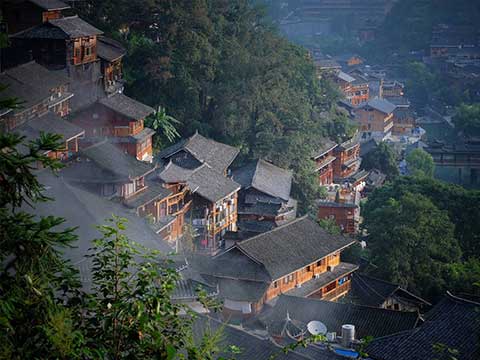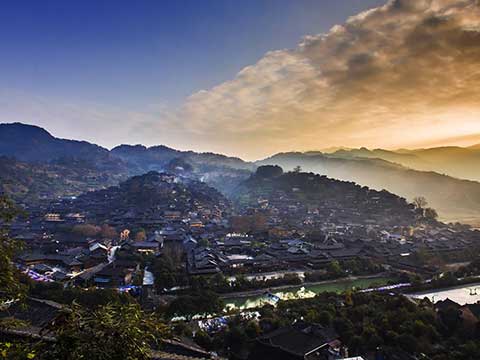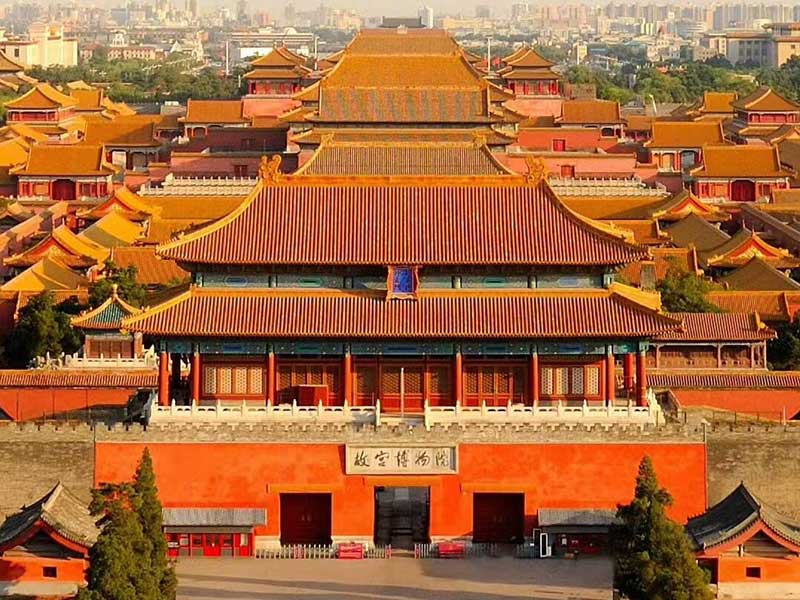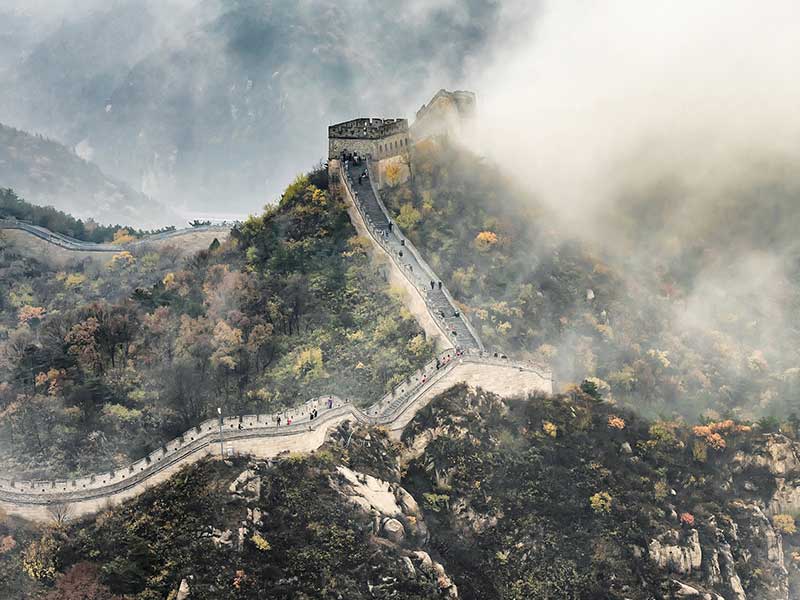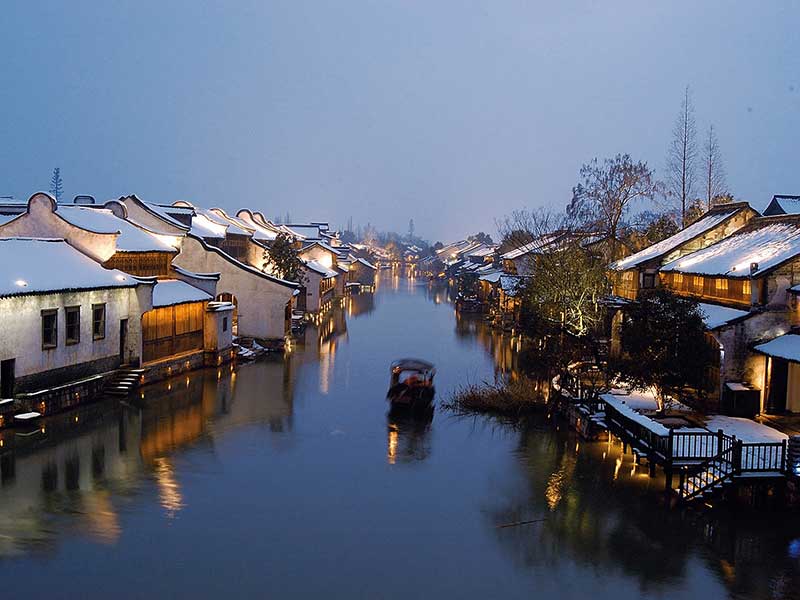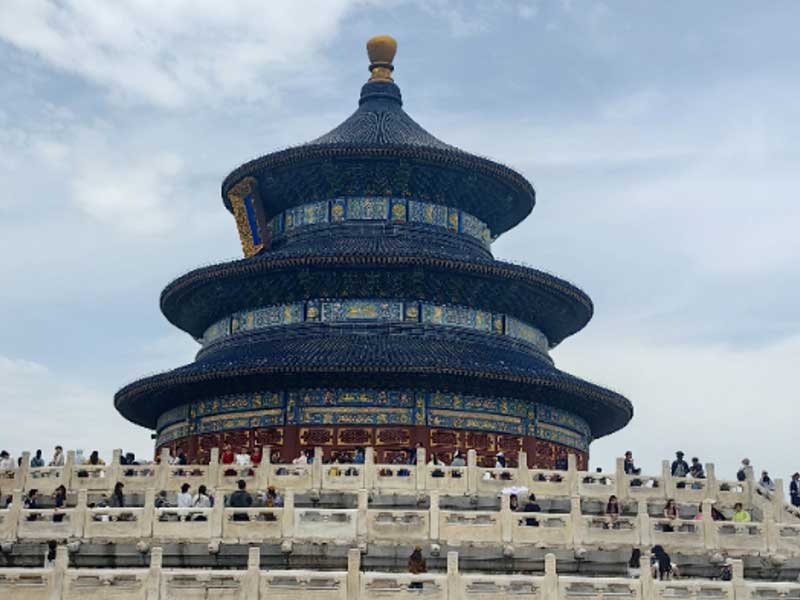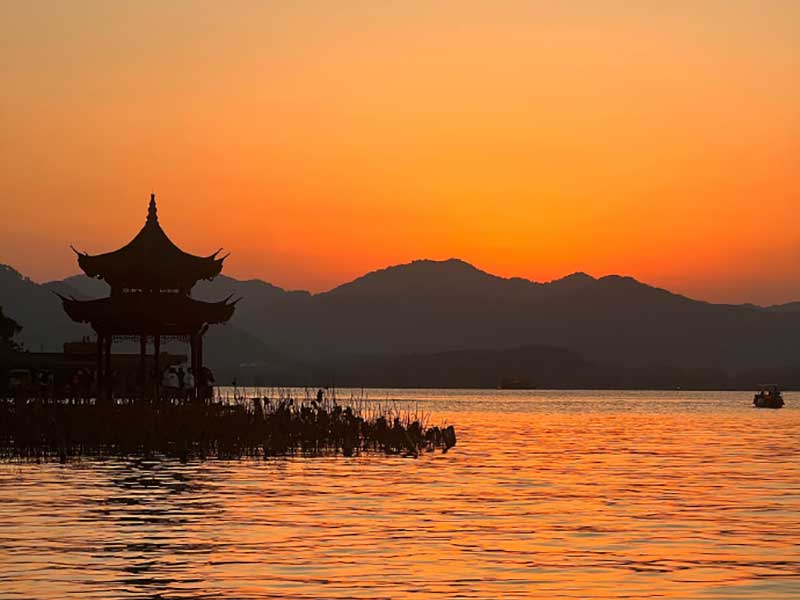Nestled at the foothills of Leigong Mountain in southeastern Guizhou, the Baijiu River winds through the valley like a silk ribbon, dividing Xijiang Miao Village into two halves. Over a thousand stilted houses, layered like scales, cling to the mountainsides, nestled between terraced fields and emerald peaks. When morning mist rises, the village resembles an ethereal paradise, earning it the title of the largest Miao settlement—and perhaps the most vibrant living museum of Miao culture—in the world. Here, every landscape whispers millennia of Miao history.
Nature’s Canvas, Stilted Houses’ Soul
The village’s grandeur emerges from the harmony of landscape and architecture. Cradled by soaring hills, terraced paddies stretch from valley floors to cloud-kissed heights, rippling with green waves in spring and gold in autumn. The Baijiu River snakes through the heart of the village, flanked by stilted houses with upturned eaves and overlapping gray tiles. Rain transforms the scene into a smoky reverie, while sunny days paint it with the vibrant hues of harvest. From the observation deck, a thousand lights sparkle like fallen stars against the night sky, river neon reflecting starlight—a romantic spectacle worthy of “China’s Most Beautiful Miao Village.”
Stilted houses are the soul of Xijiang. Built with timber frameworks, these three-story, five-bay structures rise with the mountain contours. The ground floor stores tools, the second hosts families, and the third preserves grain. Strolling on cobbled paths, one glimpses carved window lattices and corn-filled drying racks, where daily life blends seamlessly with timeless charm.
A Living Museum of Miao Heritage
Every corner pulses with Miao cultural bloodlines. The Miao Ethnic Museum safeguards ancient song scores, silversmith tools, and Lusheng dance charts, silently narrating epics of migration and forest wisdom. The Drum Worship Hall, the spiritual heart of the village, thunders with ceremonial drums during festivals, as silver-clad dancers twirl to the rhythm of Lusheng melodies, their skirts fluttering like rainbow butterflies.
Miao silver jewelry is a “history book worn on the body.” In workshops, elder silversmiths hammer sheets like gongs, engraving butterfly and maple motifs—symbols of ancestral spirits. Visitors can rent ceremonial garb for photos or join Lusheng dance lessons, embracing the culture’s silver-adorned exuberance.
Festivals: A Symphony of Life
The village’s vitality peaks during celebrations. During the Miao New Year, the entire community secludes itself for ancestor rituals, then welcomes guests with long banquet tables stretching from house to house, bearing sour soup fish, cured meats, and rice wine. The New Rice Festival honors harvests with girls parading in pleated skirts through fields, while boys serenade with leaf-whistled love songs, laughter scattering flocks of birds. Witnessing the once-in-13-year Drum Ceremony reveals sacrificial rituals and bronze drum dances, embodying Miao reverence for nature.
Immersive Experiences
Wind-Rain Bridges: Five bridges arch over the Baijiu River, adorned with dragon-carved beams. Take refuge here to listen to rain pattering on tile roofs or summer breezes, occasionally joining elderly Miao locals sharing tobacco-pipe tales.
Terrace Strolls: Hike along paddies, watching water buffalo plow and ducks frolic. In spring, try tea-leaf gathering; in autumn, learn straw-figure weaving with Miao women.
Stilted House Stays: Lodging in wood-framed Homestay(minsu) means waking to starry skies. Hosts serve fermented chili dips and grilled glutinous rice cakes, sharing fireside stories carried by mountain winds.
Flavors of the Hills
Sour soup fish is the village’s culinary keystone: fermented tomatoes and peppers cradle freshly caught river fish. Cured meats sizzle over wood fires, while rice balls dusted with soy powder and sugar warm the belly. Street stalls offer mochi, tofu, and rice wine—earthy tastes straight from the mountains.
Travel Tips
Access: Take high-speed rail to Kaili South Station, then a 1-hour shuttle; self-drivers navigate to “Xijiang Miao Village Scenic Area.”
Seasons: Autumn (Sep–Oct) glows with golden paddies; winter’s mist paints ink-wash beauty.
Etiquette: Remove shoes before entering homes, sip drinks politely, and admire silver without touching.
Xijiang is not just a destination—it’s a living cultural feast. Here, amid mountain songs, silver glint, kitchen smoke, and smiling faces, you’ll discover what “poetic dwelling” truly means.

